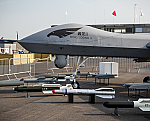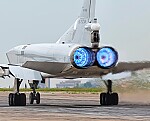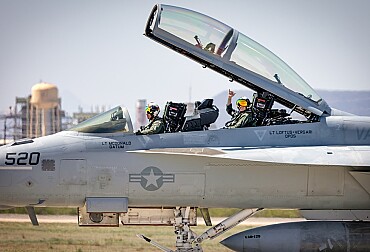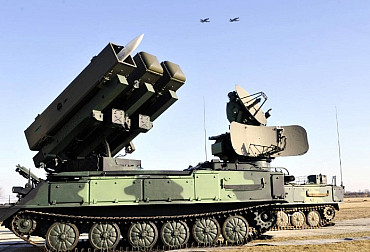F-15J Peace Eagle – Japanese air superiority fighter faces the Chinese incursions
Over two hundred units of Mitsubishi F-15J and F-15DJ air superiority fighters have been completed for service in the JASDF. Chinese aircraft were responsible for 392 alpha scrambles in the last nine months of 2023.
The Japan Air Self-Defense Force (JASDF) used supersonic jets dating back to the Cold War, namely the Lockheed F-104J/DJ Starfighter and the McDonnell Douglas F-4EJ Phantom II, until the mid-1970s, when the service sought a single solution to replace these two aging types. Its defense agency narrowed down an overcrowded field to a few strong candidates, among which the F-15C/D models seemed to best fit the bill. This led to extensive dialogue between the US and Japan to produce versions locally, under license, for the JASDF, resulting in the Peace Eagle.
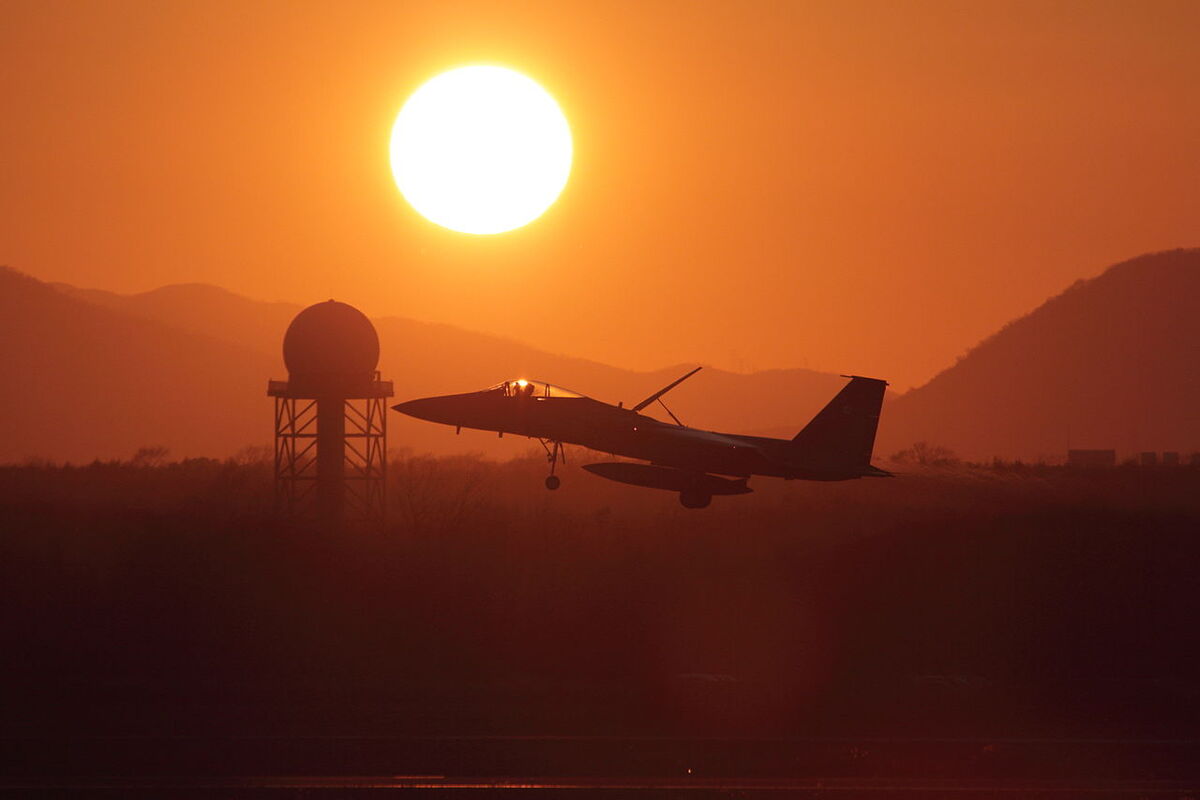
223 Japanese F-15Js were made
The Japanese J-model Eagles were introduced in 1981 and remain in active service today. Total production by Mitsubishi Heavy Industries (MHI) and McDonnell Douglas (Boeing) reached 223 fighters. Externally, the J-model Eagles closely resemble their American counterparts. The radar is housed in a hollow nose at the forward end of the fuselage. At the rear of the fuselage is the cockpit, which offers excellent visibility and is equipped with a zero-zero ejection seat (allowing the pilot to eject at 0 altitude and 0 airspeed). The engines are arranged side by side in the central aft section of the fuselage, drawn in through rectangular air intakes along each side of the cockpit, and exhausted through conventional circular vents at the rear. The aircraft has two vertical tailplanes, and the monoplane wings share the same leading edge profile as the American F-15s. The horizontal tail surfaces are of the all-motion type, providing excellent control. A retractable tricycle landing gear is used for ground roll.
In its current version, the fighter has a length of 63.7 ft (19.43 m), a wingspan of 42.8 ft (13.05 m) and a height of 18.4 ft (5.63 m). It has an empty weight of 28,000 lb (12,700 kg) and a maximum take-off weight of 68,000 lb (30,845 kg). Almost exactly the same values as for the F-15C of the USAF. Although appearing to be a direct copy of the F-15C/D models, the Japanese F-15J/DJ lacks the ECM suites, RWR units and nuclear drop capability of its American counterparts. Local solutions have been developed to fill the gaps in the first two qualities, while nuclear capability has been left out of the finalised versions.
Power is provided by 2 Pratt & Whitney F100-100 or F100-200 series turbofan engines, with afterburner, developing 64.9 kN of thrust (each) dry and up to 105.7 kN of thrust (each) with the afterburner. The result is exceptional performance in terms of flight time, which is an excellent quality for an interceptor. Performance figures include a maximum speed of 1,650 mi/h (2,655 km/h) with an service ceiling of up to 65,616 ft (20,000 m). Climb speed is 1,116 ft/s 340.6 m/s, which is also excellent for a military interceptor aircraft. The engines are manufactured under local license by IHI Corporation, to make assembly as easy as possible.
The armament consists of a single 20mm M61 Vulcan automatic internal cannon, useful for close-range engagements with air targets and also effective against ground targets when necessary. In addition, the aircraft is equipped with ten external hardpoints for a wide range of Japanese and American air-to-air and air-to-surface weapons, including the Mitsubishi AAM-3 (improved Sidewinder), AAM-4 (extended visual range missile), and AAM-5 (short-range) air-to-air missiles (AAMs), as well as the American AIM-9 Sidewinder and AIM-7 Sparrow AAMs.
Like US F-15s, the F-15J has a powerful, though somewhat limited, air-to-ground capability. It can carry a variety of conventional airdropped munitions, such as the Mk 82 General Purpose Bomb (GPB) and the CBU-87 cluster munitions-release area-denial weapon. Additionally, the aircraft can be fitted with up to three large external fuel tanks to extend operational ranges and loiter times, though at the cost of extra weight and fewer hardpoints for missiles. The aircraft can also receive in-flight refueling from aerial tankers like the KC-135 platform.
Four distinct forms of the ultimate F-15 Peace Eagle were produced, starting with the single-seat F-15J models. Two units of the J models were manufactured by McDonnell Douglas at its plant in St. Louis, Missouri, while the remaining 139 were built under license by MHI in Japan. Production of the J models lasted from 1981 to 1997. The first flight of a J-model Eagle was recorded on June 4, 1980. The two-seat F-15DJ models, used for advanced fighter training and equipped with a second crew member, followed. Twelve of these were built by McDonnell Douglas, with the final 25 produced by MHI. The F-15J Kai variant entered service as a modernized version of the original F-15J fighters. The latest development is the F-15J Japanese Super Interceptor, which promises to extend the life of these aircraft over the coming decades through upgrades in digital processing, onboard radar, and electronic countermeasures (ECM) suites.
Japan is the sole operator of the J-model Eagle. It is in operational service with seven active JASDF fighter squadrons, one test squadron, and a single training squadron as of 2019. The J/DJ models were upgraded in the late 1980s to improve digital processing, engines, ECM, and weapons delivery/support. The F-15s currently in service with the JASDF are expected to be replaced by a yet-to-be-completed advanced 5th-generation fighter design, intended for air superiority missions. Meanwhile, the JASDF has begun receiving Lockheed Martin F-35 ‘Lightning II’ 5th generation attack fighters to enhance air capabilities over the next decade. The F-15J is deployed alongside the EF/RF-4EJ Phantom II and F-2A (F-16 Fighting Falcon) multi-role aircraft. The total number of J-model Eagles in service today stands at 155, making the JASDF the largest operator of F-15 Eagles outside the US.
Chinese and Russian Incursions
Every year, the Japanese Ministry of Defense reports a high number of interceptions of Chinese and, to a lesser extent, Russian aircraft in the Air Defense Identification Zone (ADIZ) under its jurisdiction. According to statistics published in January, the Japanese Air Self-Defense Force scrambled its fighter jets 555 times during the last nine months of 2023. Specifically, Chinese aircraft were responsible for 392 alpha scrambles, or 71% of the total. These figures are higher than the ten-year average, according to the Joint Staff Office of the Japanese Ministry of Defense.
That said, apart from a 2016 incident involving Chinese Su-30s and Japanese F-15s near the Senkaku Islands – territory that Beijing claims as its own – no violations of Japanese airspace by military aircraft had been reported until recently. On August 26, at 4:29 a.m. local time, a Y-9DZ spy aircraft specializing in signals intelligence entered Japanese airspace near the Dango Islands in Nagasaki Prefecture. According to Tokyo, it remained in Japanese airspace for approximately two minutes. The Japanese Ministry of Defense reported that the Y-9DZ continued to fly in a racetrack-like pattern near the Dango Islands. Japanese combat aircraft – likely F-15s – intervened, issuing warnings to the crew of the Chinese aircraft.
“The violation of our airspace by a Chinese military aircraft is not only a serious infringement of our sovereignty but also a threat to our security. It is totally unacceptable,” commented Japanese government spokesman Yoshimasa Hayashi. He added, “We refrain from giving a precise answer as to the objective of the Chinese aircraft's actions. However, China's recent military activities in the vicinity of Japan are expanding and becoming increasingly active.” Tokyo also issued a formal protest to Beijing through diplomatic channels. In response, Chinese authorities stated that they would "verify the facts."
“Both sides are maintaining communication through existing channels. I would also like to stress that China has no intention of invading the airspace of any country,” said Lin Jian, a spokesman for the Chinese Ministry of Foreign Affairs. He suggested that the incident could have been caused by a navigational error by the Y-9DZ crew. However, while the Danjo Islands may not appear to hold significant strategic value, they are located south of the Sasebo naval base, which houses both Japanese and American Navy ships.
In any case, two plausible hypotheses explain this unprecedented incursion by a Chinese spy plane into Japanese airspace. The first is that the aircraft was testing Japan's air defenses while gathering intelligence. The second is that Beijing was retaliating for the incursion of its territorial waters by the destroyer JS Suzutsuki in July. At the time, Tokyo attributed the incident to a procedural error by the ship's commander.





